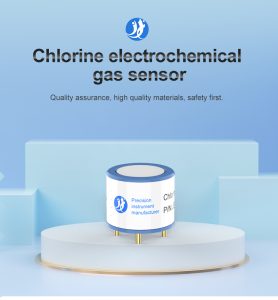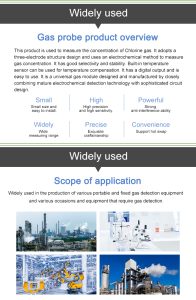Indoor air quality (IAQ) is a critical aspect of our overall well-being, as we spend a significant amount of time indoors. Contaminants such as volatile organic compounds (VOCs), carbon monoxide (CO), and particulate matter can have adverse effects on our health. To address these concerns, smart gas sensor systems have emerged as effective tools for enhancing indoor air quality. This article explores the benefits and advancements of smart gas sensor systems in monitoring and improving IAQ.
Real-time Monitoring:
Smart gas sensor systems provide real-time monitoring of various gases and pollutants present in indoor environments. These sensors continuously measure the concentration levels of VOCs, CO, nitrogen dioxide (NO2), ozone (O3), and other harmful substances. Real-time data allows users to promptly identify and respond to any changes or anomalies in IAQ, ensuring a healthier indoor environment.
Early Detection and Alarming:
One of the primary advantages of smart gas sensor systems is their ability to detect gas leaks or elevated pollutant levels at an early stage. Gas leaks, such as from faulty appliances or HVAC systems, can lead to the release of toxic gases, posing severe health risks. Smart gas sensors can detect even trace amounts of these gases and trigger alarms or notifications to alert occupants of potential dangers. This early warning system enables prompt actions, such as evacuations or repairs, to mitigate risks efficiently.
Integration with Building Management Systems:
Smart gas sensor systems can be seamlessly integrated into building management systems (BMS) or home automation platforms. This integration allows for centralized monitoring and control of IAQ parameters, providing a comprehensive view of indoor environmental conditions. BMS integration enables automatic adjustments of ventilation, air conditioning, and filtration systems based on real-time gas sensor data. For instance, if high VOC levels are detected, the system can increase ventilation rates or activate air purifiers to maintain healthier IAQ.
User-friendly Interfaces and Mobile Apps:
Modern smart gas sensor systems come with user-friendly interfaces and mobile applications that provide intuitive ways to monitor IAQ. These interfaces display real-time data, historical trends, and analysis of gas concentrations in an easily understandable format. Users can access this information remotely through smartphones or tablets, enabling them to stay informed about IAQ even when they are not physically present at the premises. Mobile apps also provide alerts and notifications, ensuring that users proactively address any IAQ concerns.
Data Analytics and Insights:
Smart gas sensor systems generate a wealth of data, which can be leveraged to gain valuable insights into IAQ patterns and trends. Advanced analytics algorithms can process and analyze this data, identifying correlations between gas concentrations, environmental conditions, and occupant behaviors. By understanding these relationships, building operators or homeowners can make informed decisions on ventilation strategies, occupancy patterns, or pollutant source control to optimize IAQ and minimize health risks.
Continuous Monitoring and Maintenance:
Smart gas sensor systems offer continuous monitoring capabilities, allowing for proactive maintenance and troubleshooting. These sensors can detect gradual changes in IAQ indicators, such as increasing VOC levels or decreasing oxygen levels, indicating potential equipment malfunctions or ventilation issues. By addressing these issues promptly, maintenance teams can ensure optimal system performance and minimize energy waste.
Conclusion:
Smart gas sensor systems have revolutionized the way we monitor and enhance indoor air quality. Through real-time monitoring, early detection, and integration with BMS, these systems provide a holistic approach to maintaining healthier indoor environments. User-friendly interfaces and mobile apps enable easy access and control of IAQ parameters, while data analytics offer valuable insights for optimizing IAQ strategies. With continuous monitoring and proactive maintenance, smart gas sensor systems contribute to a safer, more comfortable, and healthier living and working environment.
 : +86 155 8830 2704
: +86 155 8830 2704 : jxdziot@gmail.com
: jxdziot@gmail.com
